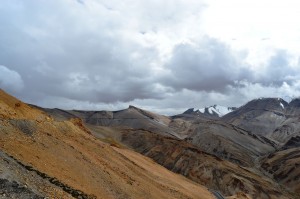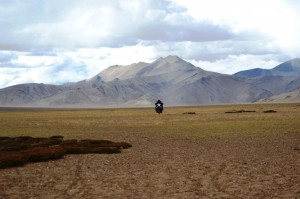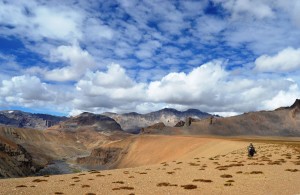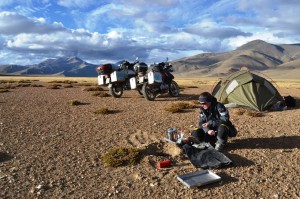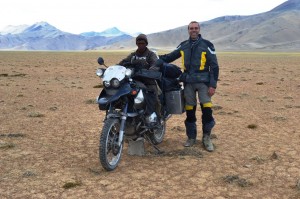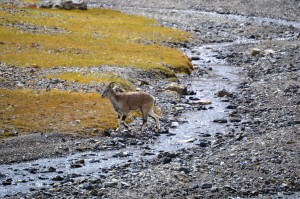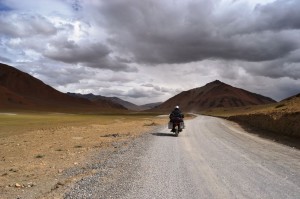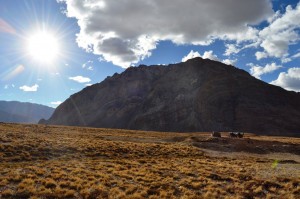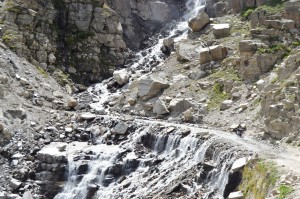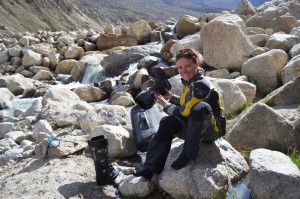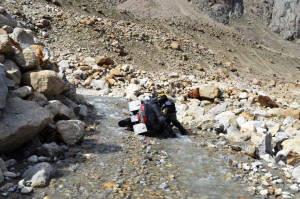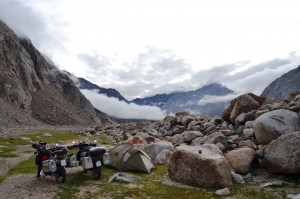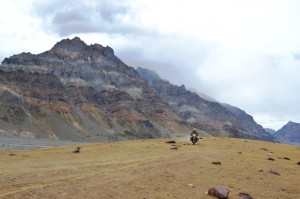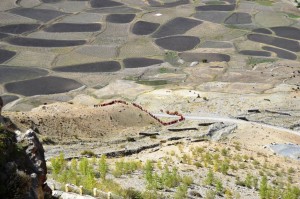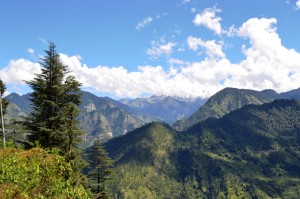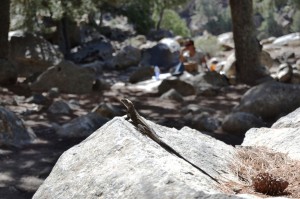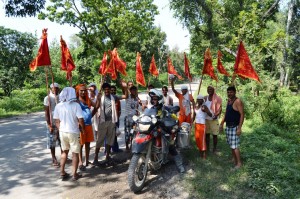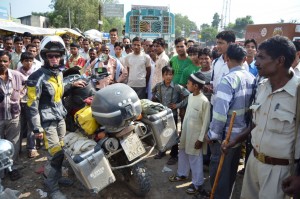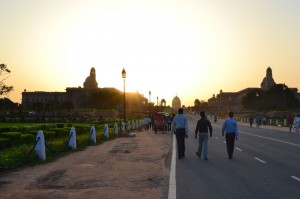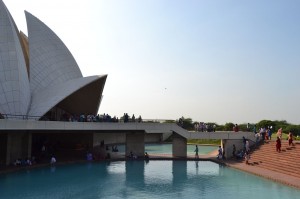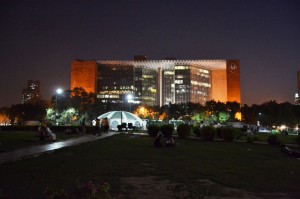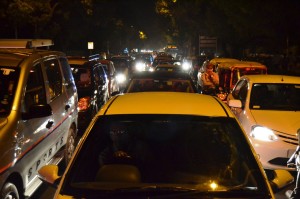From Leh to Delhi – what a change!
October 2, 2012 in India, On the road
The differences and the changes you experience when driving from Leh to Delhi could not possibly be bigger – the culture, the landscape, the living standard – everything changes on this route. There are deserts, glaciers and subtropical forests, uninhabited areas and the always chaotic Delhi; it was freezing cold and extremely hot, and all this on the way from the quiet Ladakh to the “true India” – crowded, noisy, and colourful.
From Leh to Delhi, we first had to cross a big part of the Himalayans, including the central ridge. Quite a few passes with 5000 m or more lie on the way, and in between you come across dry plains without vegetation, at an altitude of constantly about 4000 m.
There are no villages along this so called Leh-Manali-Highway – only a few tent camps, and some basic huts in between. From time to time we saw some nomads with their big herds of goads, but apart from this there are only few yaks, cows, and horses on these plains, in an absolutely stunning landscape, which is hard to describe.
Just before Manali, we left the “highway“, and turned towards the Spiti valley, from which we had heard that it is also very beautiful. But another advantage was that we could skip the Rotang pass, which is famous for its knee-deep mud all the way down to Manali. However, the road to Spiti valley was also not easy to drive – with big rocks on the way and a lot of water to cross.
From Spiti valley we went then further south into Kinnauer valley (for all that want to travel the same route: you need a “Inner-Line-Permit” for this leg, which you will get in Kaza). In Kinnauer valley the road led us along the river in a deep canyon-like valley for endless kilometres. We had to stop here for 2 days and camp next to the police check-post because the road was blocked by a massive landslide. Apparently, some blasting had gone wrong…
The vegetation changes as well in this area – a sign that we reached the southern edge of the Himalayas. The mountains were getting greener with every kilometre, and soon huge pine trees were covering their flanks. After many weeks without seeing any forests this was a very special sight for us.
In Rampur we then turned south on a very small road, which led us with thousands of turns through a landscape with green meadows, deep valleys and white peaks – like we were somewhere back in the southern Alps. Only the monkeys, which we saw from time to time, were disturbing this feeling.
Further south the vegetation turned into sub-tropical forests – palm trees, cacti, and banana plants were growing along the road. Different species of monkeys were roaming through the huge trees – and we saw big, silvery spiders that were crossing the road in the dusk (this was the point where Heike decided that camping is not such a good idea today).
The last kilometres to Delhi we went over some bigger, very good roads through the densely populated landscape- and then right into the chaos of this big city, which is actually much nicer than its reputation. Ok, the traffic is a nightmare, it is noisy, hectic, and full of people; there are many beggars, and some shantytowns with people living in extreme poverty. But on the other side, there are many areas in this city, which are not so different from some huge western cities. You find all kinds of luxury shops selling the usual brands, there are huge office buildings, big hotels, beautiful parks, international restaurants – and the people, who are obviously more used to foreigners, are not so pushy like in some other places in India. The roads are paved, and often lined with trees. Compared to a city like e.g. Lahore, Delhi appears to be a century ahead.
What a journey from Leh to Delhi, with massive contrasts, wonderful landscapes, and many different cultures….
If you want to see more photos, go to our photo gallery “from Leh to Delhi”
